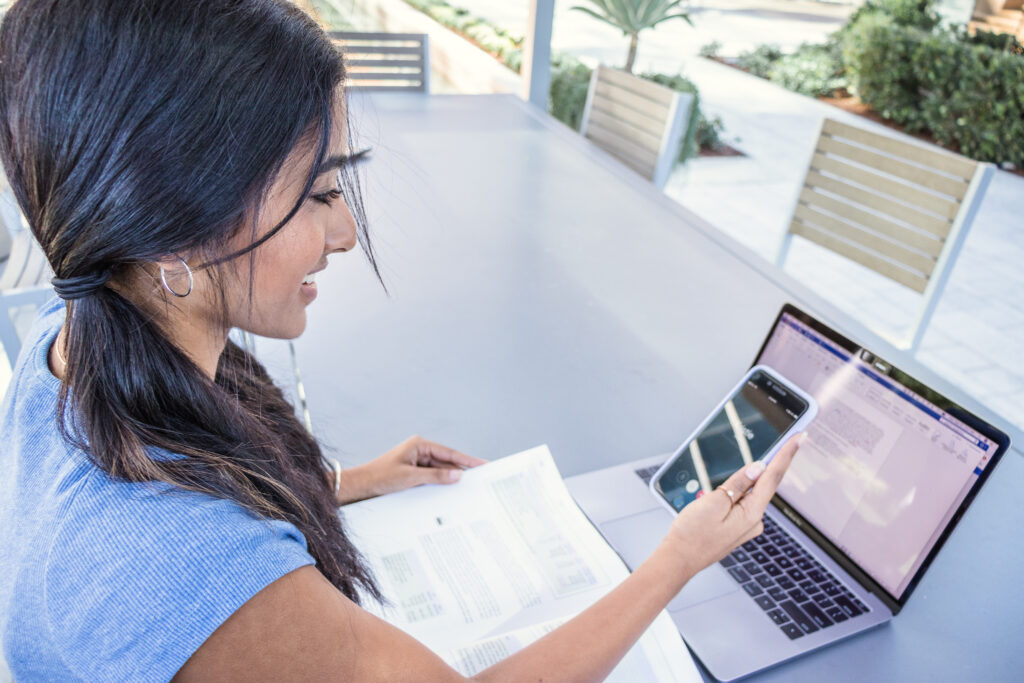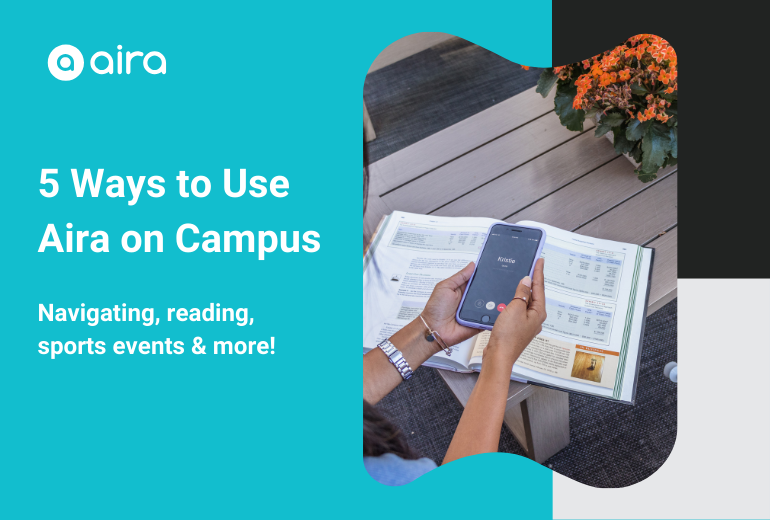For many college students, getting comfortable on a college campus can take time. Students can find locating their classes, the library, and where to go for various day-to-day tasks overwhelming at first. For students who are blind or low vision, these obstacles can be greater. Many universities are making efforts to increase accessibility on their campuses, in order to empower their students to have the best experience possible at school. One tool that a growing number of universities are offering is the Aira app. Aira geofences the campus, meaning anyone who is within the school’s boundaries can use Aira, free of charge. Students open the Aira app on their phone and connect with a trained visual interpreter. Using the student’s phone camera, the visual interpreter can assist with a vast range of tasks by describing surroundings, reading aloud, narrating and explaining.
Aira is already in action on campuses like Rutgers University, Columbia University, New Mexico State University, Northern Arizona University, and Texas A&M University, just to name a few. Notably, students can connect with a visual interpreter 24 hours a day, seven days a week, 365 days a year. No advance reservations are required, since it’s hard to anticipate when connecting with a visual interpreter will be helpful. Read below to learn more about the ways that Aira and our visual interpreters can assist students as they move through their days on campus.
1. Navigation
One of the most popular uses of Aira is for navigating campus with independence. Campuses can be geographically large, and it can be time consuming for some blind or low vision students to get to their destinations, especially the first time. Students can connect with a visual interpreter and explain what location they are trying to reach, whether it be a lecture hall or a dorm. The visual interpreter can access their phone’s camera as well as a map of the campus, and use that information to guide the student to their destination. Aira’s visual interpreters are highly trained, and describe surroundings in detail, as well as obstacles, and the presence and location of other people. If a student has multiple stops on campus in the course of a day they need assistance with, they are free to connect with an interpreter for each one.
2. Attending sporting events and live performances
For many university students, going to sports games and live performances can be an enriching part of the campus experience. However, if the game or show doesn’t have accessible audio description, it means an audience member who is blind or has low vision may feel they miss a lot of the detail. For example, a student sitting in the stands might experience everyone around them jumping up and cheering, and would not know what had played out on the field.
A student attending a football game could open their phone and connect with an Aira visual interpreter at the beginning of the game. The interpreter would direct the student in how to position their phone so the field was in proper view. Then the interpreter would describe what was happening in the game, using detailed and clear language to provide the best description possible. The visual interpreter could remain connected for the duration of the game to ensure the student got the full experience.
3. Accessing inaccessible websites
Many people who are part of the blind or low vision community use screen readers in order to access online information. While the accessibility of websites is improving, not every website works with a screen reader. For example, a student in a biology class might be trying to access the results of a recent study. Unfortunately, the website the study is published on is inaccessible. In these instances, the student could still access the information they are looking for by connecting with an Aira visual interpreter. The visual interpreter would instruct the student to point their phone’s camera in a way that provided a good view of the report pulled up on their computer screen. Then the interpreter would read aloud the information on the screen, stopping when needing or repeating pertinent information as requested by the student.

4. Choosing food on campus
Many students spend all day on campus, and being well nourished is important. For blind or low vision students, Aira can remove some of the barriers that may be hindering them from efficiently choosing foods they want to eat. For example, in a school cafeteria, the location of certain foods or the available foods might change daily. Or, the menu might be written on a chalkboard or sign that the student cannot access. Instead of relying on those around them, a student could connect with an Aira agent who could list the available food, as well as its appearance, ingredients, and prices. This can help ensure students get to eat what they want and can get to their next classes or commitments on time.
5. Reading printed materials
A lot of methods of communication on campus are digital these days. However, there are still some situations where information is distributed in non-digital formats. These could include a syllabus handout, a book in the library, or a brochure for an on-campus club. In these instances, a student could connect with an Aira visual interpreter who could use the student’s camera to read aloud the information. The interpreter could repeat certain sections of the printed material if the student needed to hear some details again.
Interested in offering Aira on your campus? Get in touch with our team today.
